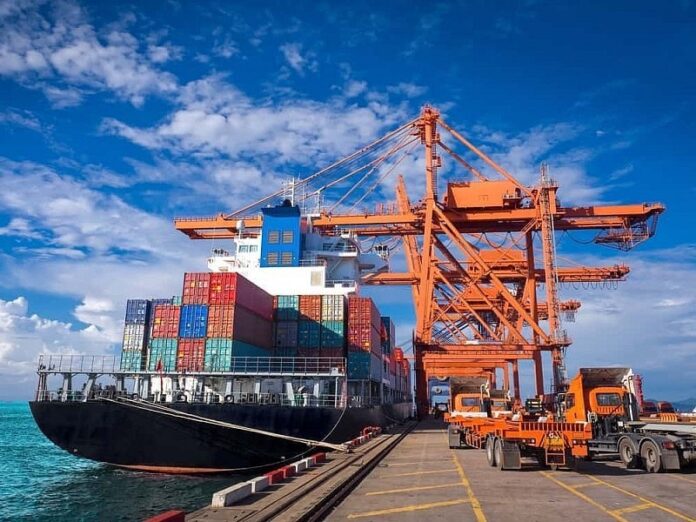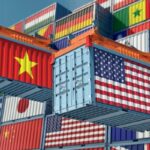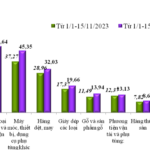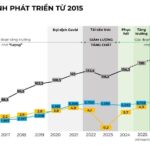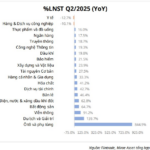US-Vietnam Trade Relations: A Positive Outlook

Illustrative image
At the July regular Government meeting, Minister of Industry and Trade Nguyen Hong Dien shared that the Ministry of Industry and Trade has promptly submitted to the Prime Minister a group of tasks assigned to ministries and sectors to effectively adapt to US tariff policies.
One key task is to continue technical negotiations to consolidate the official agreement, which will be implemented in the coming week.
The Ministry of Industry and Trade also proposed scenarios and task groups for the Government to assign to relevant ministries and sectors to adapt to US tariff policies.
The Ministry suggested that the Ministry of Finance coordinate with relevant ministries and sectors to assess the impact of tariff rates on Vietnam and propose tasks, solutions, and mechanisms to respond effectively. Meanwhile, local authorities and relevant ministries and sectors should urgently resolve obstacles for projects to be renovated according to the planning, thereby unlocking resources for the economy.
Additionally, the Ministry of Industry and Trade will develop and implement a plan to realize the Trade Agreement with the US, including improving the business investment environment, supporting businesses in expanding trade and export markets, and enhancing domestic consumption capacity. The Ministry also mentioned a solution to develop a policy to promote supporting industries and maximize local resources and encourage the production of items with a 0% tax rate.
All these tasks are being implemented and are expected to be submitted to the Government for comments from ministries, sectors, and agencies today (August 7) and tomorrow.
Vietnam and the US have held multiple rounds of trade negotiations
In fact, since the end of April 2025, Vietnam and the US have held numerous trade negotiations at both the technical and ministerial levels.
During the negotiations, Vietnam and the US made significant progress in discussing and advancing issues such as tariffs, rules of origin, customs, agriculture, non-tariff measures, digital trade, services and investment, intellectual property, sustainable development, supply chains, and trade cooperation.
In the early morning of August 1, 2025 (Vietnam time), the White House published a Presidential Proclamation on adjusting tariff rates. The US decided to adjust tariff rates for 69 countries and territories listed in Appendix I. According to this Appendix, the tariff rate for Vietnam was reduced from 46% to 20%. This is considered a positive signal affirming Vietnam’s negotiating position, as only a few countries have achieved significant tariff reductions with the US.
According to US Customs data, two-way trade turnover between the US and Vietnam in 2024 reached 149.7 billion USD. Vietnam exported 136.6 billion USD worth of goods to the US and imported 13.1 billion USD from the US. In the first five months of 2025, two-way trade turnover between the two countries reached 77.4 billion USD, up 36.5% compared to the same period in 2024. Vietnam’s exports reached 71.7 billion USD, up 37.3%, and imports were 5.7 billion USD, up 30.7%.
The Art of Adaptation: Navigating the US Tariff Landscape
As per the statement by the Minister of Industry and Trade, the US will impose a 20% countervailing duty on Vietnamese goods, effective from 12:00 PM on August 7, Washington D.C. time. This translates to the tariffs taking effect in Vietnam within a day. The Ministry of Industry and Trade has promptly submitted to the Prime Minister a task force proposal, assigning relevant ministries and sectors to effectively adapt to this new tariff policy.
The Art of Trade: Unveiling November’s $681 Billion Dollar Secret
Despite a decline in the first half of November, the total trade value of goods from the beginning of the year to November 15, 2024, reached an impressive $681.48 billion. This remarkable figure marks a 15.7% increase compared to the same period in 2023. Exports witnessed a 14.8% surge, while imports climbed even higher, reaching a 16.6% increase.
Coping with the Trend of Rising Protectionism in the Asian-African Market Has Yielded Positive Results
There is a huge potential to expand export markets into Asia and Africa; however, one of the biggest challenges is the protectionist viewpoint, which creates barriers from importing nations.

























